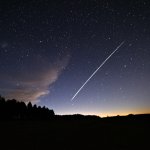What’s going on up there? The latest in space
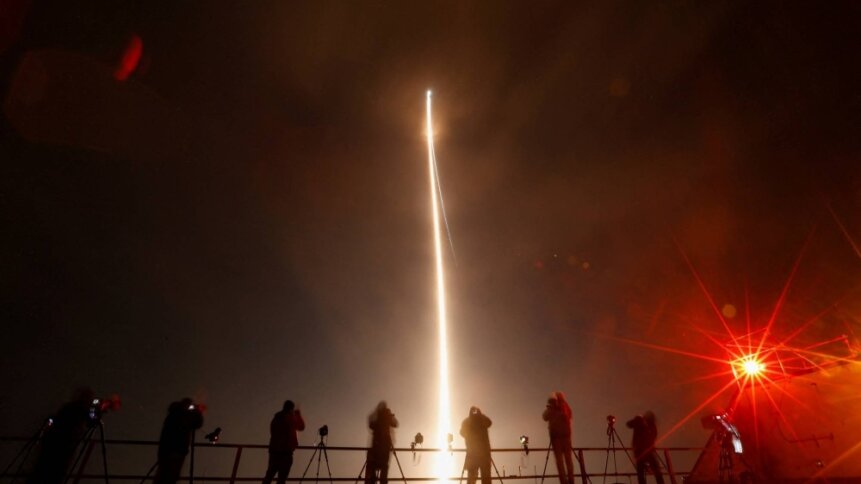
- Vulcan launch cements ULA’s dominance for US national security satellite launches.
- A Japanese startup plans to use lasers to clear space debris from Earth’s orbit.
- Satellite guidance and earth-bound lasers are approaches to keeping orbital pathways clear.
Last week, the launch of a new Vulcan rocket saw the US government reach a milestone in its aim to build a list of suppliers for its satellites. The Boeing-Lockheed joint venture also inaugurates a formidable rival for Elon Musk’s SpaceX.
For years, SpaceX’s reusable Falcon 9 rocket has been the primary option for countries to send their satellites into space. Boeing and Lockheed Martin’s United Launch Alliance (ULA) sent Vulcan into space for the first time on Monday 8th of January, a step toward reclaiming market share from SpaceX after a successful launch out of Florida.
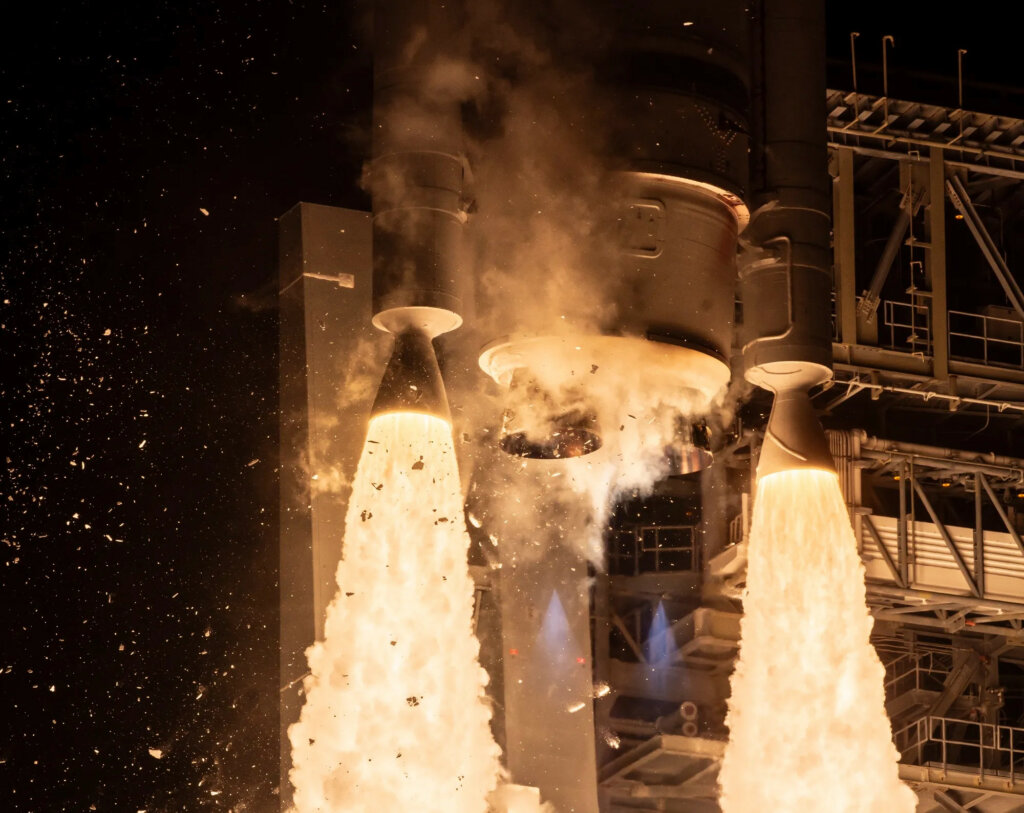
The successful launch of Vulcan on January 8th. Image via ULA.
“This launch puts ULA in the front-runner position to challenge SpaceX’s de facto monopoly over launch,” said Caleb Henry, a space analyst at Quilty Analytics. “If ULA can prove that Vulcan can scale up to a rapid launch cadence quickly, they will provide the market with another route to space.”
READ NEXT

SpaceX: escape to low-Earth orbit
Demand for launches has soared (pardon the pun), driven by plans from countries and companies like Amazon to get internet satellites into space. Supply to the West has dropped, however, with Europe’s sovereign space access held up by rocket development delays and Russia’s rocket program being isolated by the West over the Ukraine war.
The Pentagon is growing concerned about dependence on SpaceX because it wants multiple vendors for rides into orbit. “If SpaceX has a bad day in the future, we’d still have a pathway to space for our national security needs” with Vulcan, said Michael Lembeck, a space consultant and director of University of Illinois Advanced Space Systems lab.
Although smaller launches like Vulcan and Falcon 9 have become commonplace, as run-of-the-mill as space travel can really be, bigger rockets are at least months, if not years, away from reaching orbit.
“It takes a long time to develop a new heavy-class launch vehicle, so the scarcity is going to be here for about 10 years,” ULA CEO Tory Bruno said in an interview at Vulcan’s launchpad before its launch.
At the moment, those closest to making it are SpaceX’s Starship and Blue Origin’s New Glenn. Vulcan’s launch debut means ULA can start fulfilling a multibillion dollar backlog of some of 70 missions, roughly split between government and commercial missions. The majority of its commercial bookings so far are for Amazon’s Kuiper satellite project.
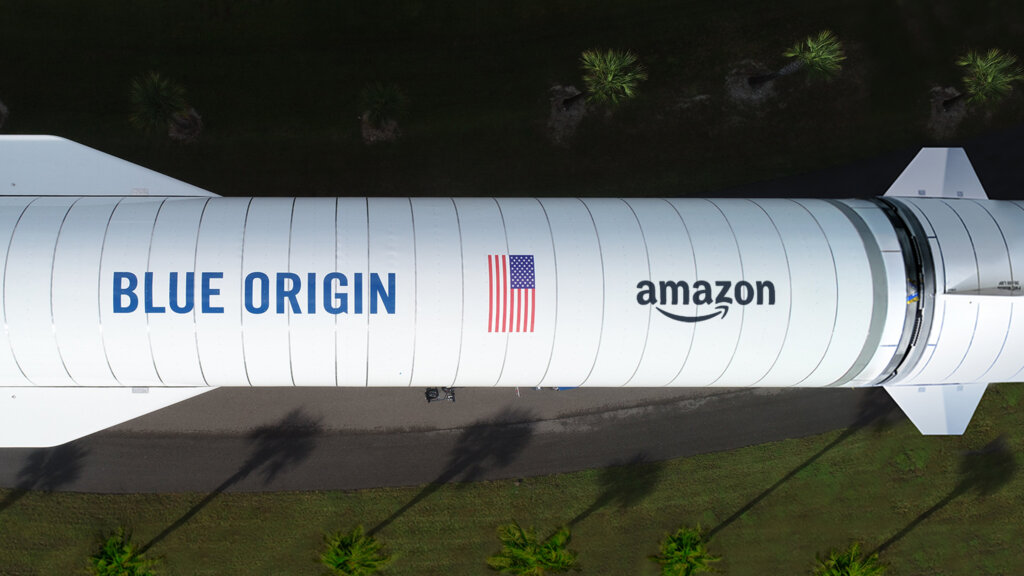
New Glenn has been selected for 12 launches, with options for up to 15 additional launches to deploy Amazon’s Project Kuiper satellite constellation. Image via Blue Origin.
ULA’s dominance for US national security satellite launches was anchored by Vulcan’s predecessor, Atlas V. The starting price for a Vulcan launch is half that of Atlas V, at roughly $110 million. In comparison, SpaceX’s reusable Falcon 9 comes in at around $62 million per launch, although Pentagon missions often cost more.
As ULA and SpaceX go head to head in the battle for national security missions, the Pentagon’s next launch procurement will up the competition by picking three core launchers. In 2020, the Pentagon picked up ULA to launch 60% of its national security missions through 2027, with SpaceX to launch the rest.
For Atlas V, ULA used Russian-made RD-180 engines, which became a security concern in 2014 after the Russian invasion of Crimea. That, along with the rise of SpaceX’s cheaper Falcon 9, is what prompted development of Vulcan.
Vulcan can use up to six solid rocket motors for extra boost, meaning it can carry up to 60,000 pounds of satellites in a low orbit or 32,000 pounds to further orbits.
There are 17 more missions booked for Atlas V before it’s retired. Allowing it to fulfil this commitment, perhaps fortunately, ULA had bulk-ordered RD-180 engines before Russia’s invasion of Ukraine caused American-Russian relations to collapse.
Now, Blue Origin has effectively replaced the RD-180, supplying Vulcan’s twin BE-4 engines. Blue Origin is Jeff Bezos’ space firm, which, with the launch of Vulcan last week, once again pits the world’s tech billionaires against one another.
The launch also marked Blue Origin’s first step into Earth’s orbit and it’s building its own launcher, New Glenn, a more powerful rival to Vulcan – which currently uses seven BE-4 engines.
By late 2025, Bruno said, ULA plans to increase production to 25 booster rockets annually, and it has roughly 100 engineers working on future upgrades to cut production costs. Those upgrades include a plan to recover and reuse Vulcan’s BE-4 engines – about 65% of the booster cost.
Creating a wonderfully cartoonish mental image, recovery of the engines will use a heat shield, parachutes and a helicopter to catch them out of the air, a similar strategy to the one used by smaller launcher Rocket Lab.
ELA will test and implement its reuse strategy for Vulcan during its Amazon Kuiper missions: “It’s a little bit up to Amazon,” Bruno said.
Protecting a satellite with lasers
While Americans work to send more satellites into space, an Osaka-based startup is trying to remove space junk. EX-Fusion plans to use laser beams fired from the ground to take out satellite debris from Earth’s orbit.
The US military identifies and tracks space junk measuring 10 centimeters or more in size, but with increased space-related activities there’s a growing need to track and remove smaller pieces.
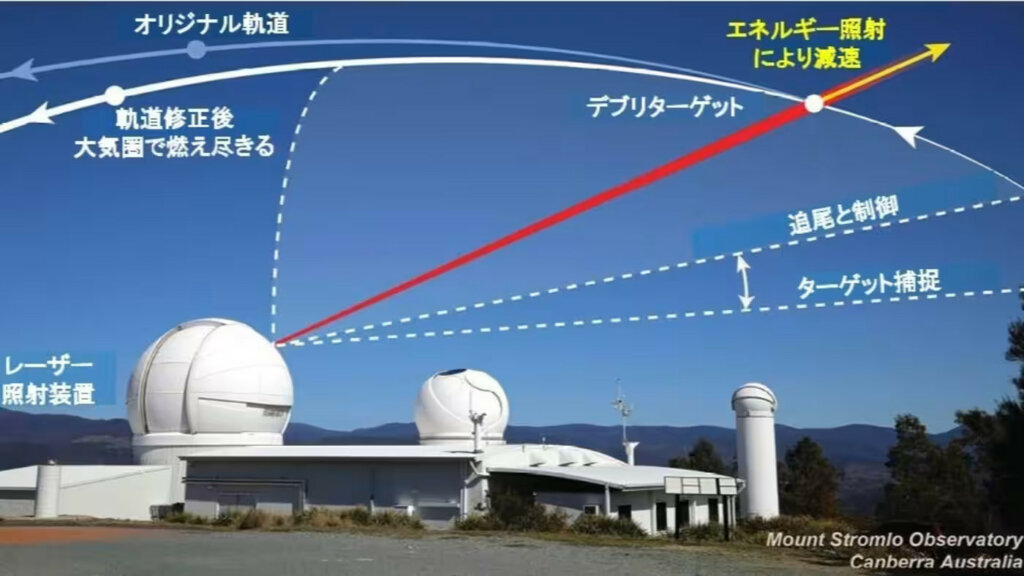
EX-Fusion’s plan is to fire lasers from the ground to slow the speed of space debris, causing it to drop into the Earth’s atmosphere. Image via EX-Fusion.
Tokyo startup Astroscale Holdings plans to offer a service that removes relatively large pieces of space debris with a dedicated satellite, while elsewhere in Japan, Sky Perfect JSAT is teaming up with state-backed research institute Riken and some other partners to develop a laser mounted on a satellite that will redirect debris into Earth’s atmosphere, where it’ll burn up.
When old satellites and rocket bodies collide in orbit at high speeds, smaller fragments are created. Debris as small as a few millimeters has been known to cause problems by striking spaceships and functioning satellites.
EX-Fusion stands out because it takes a ground-based approach to clearing satellite debris, tapping into its arsenal of lasers, which it originally developed in pursuit of fusion power. In October, the company signed a memorandum of understanding with EOS Space Systems, an Australian contractor that owns the technology needed to detect space debris.
Planning to put a high-powered laser in an observatory operated by EOS Space outside of Canberra, the first phase for EX-Fusion will be to set up lasers to track satellite debris smaller than 10cm in diameter. Typically, pieces this size are difficult to target from the ground – we can’t imagine why!
Having laser beams that can shoot down space junk is all very well – but do make sure you point them in the right direction…
Putting the brakes on space waste
Phase two will see EX-Fusion and EOS Space attempt to remove space debris by boosting the power of the laser beams fired from the surface. By firing lasers intermittently against the satellite debris from the opposing direction of its travel, its movement will be slowed. A decreased orbit speed means the space waste will enter the Earth’s atmosphere and burn up.

The reality is less space battle, more garbage man with a big laser! Image from Science Fiction and Fantasy Stack Exchange.
Usually, space + lasers = Star Wars-esque battle, blasting rocket ships to smithereens. And indeed, EOS Space group does supply laser weapon systems used to destroy drones (because that’s a thing we do now, Humanity), but the lasers used to remove space debris are completely different.
Current laser weaponry uses fiber lasers, which can cut and weld metal and destroy targets like drones, using the heat generated from continuous firing. Instead, capturing space waste involves diode-pumped solid-state (DPSS) lasers, which apply force to debris, stopping it like a brake.
EX-Fusion’s laser fusion process uses DPSS lasers, which compress hydrogen fuel pellets by striking their surface, triggering a fusion reaction.
“The power of lasers for destroying space junk and satellite debris is an order of magnitude lower than for nuclear fusion, but they share technical challenges such as controlling them via special mirrors,” EX-Fusion CEO Kazuki Matsuo said.
The hurdles of precision and power are still facing EX-Fusion, but it has the advantage of allowing for improvements and maintenance to be easily handled – all its equipment stays firmly on Earth.
The technology EX-Fusion is developing could work in tandem with services that remove larger chunks of debris like Astroscale. Given SpaceX’s recent track record, the ability to remove objects from space might be needed sooner rather than later.






